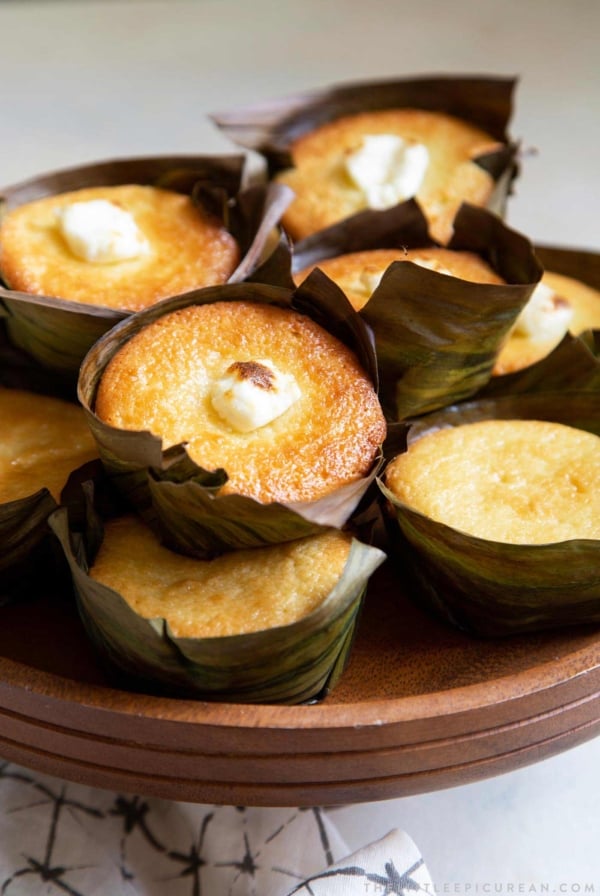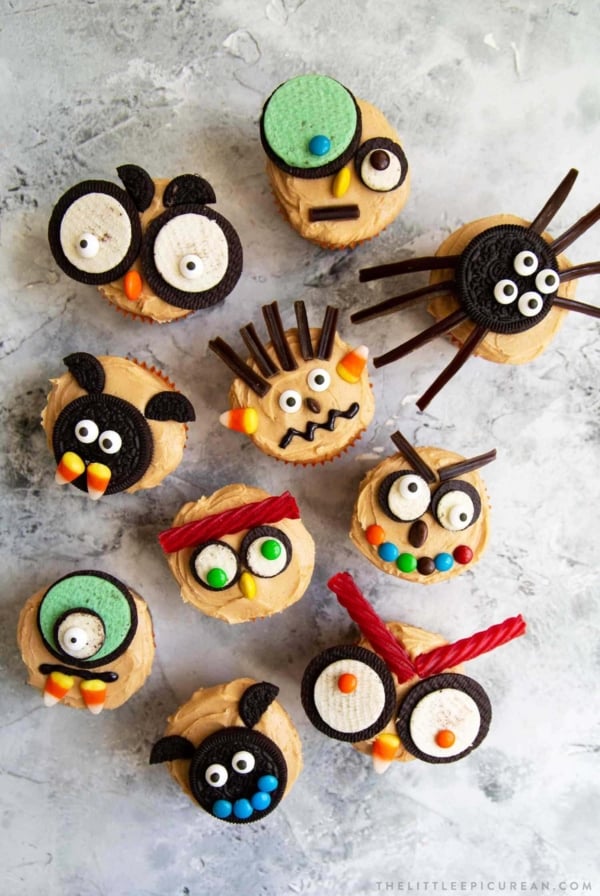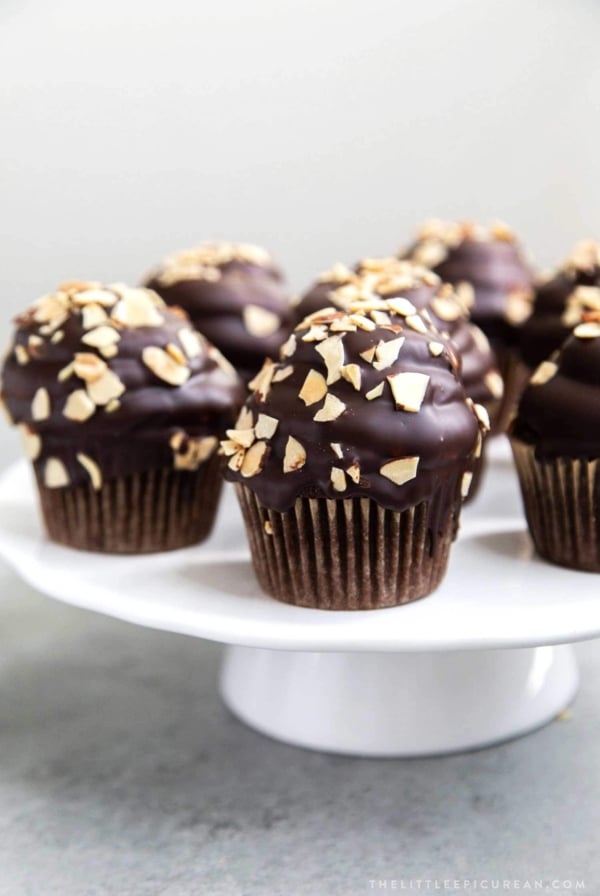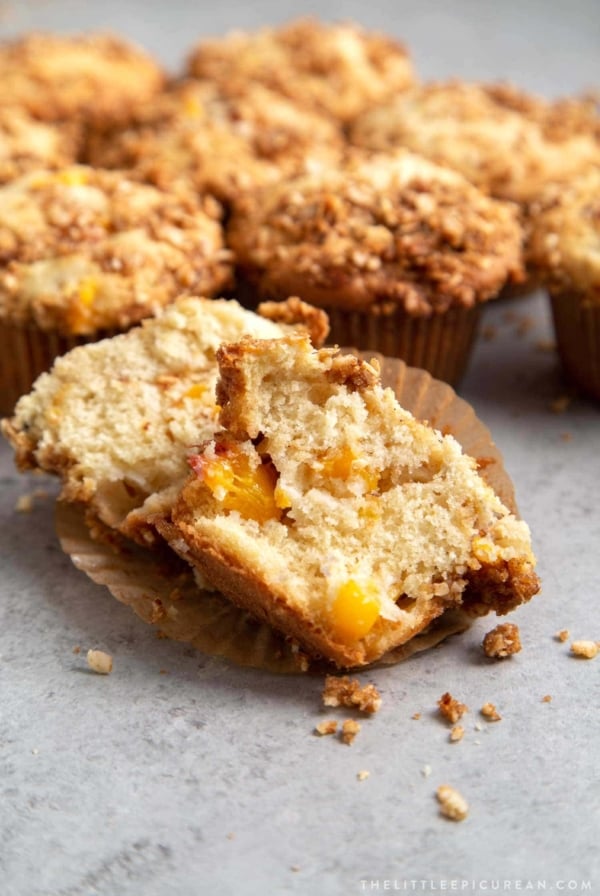This version of cassava bibingka features a combination of grated cassava and fresh coconut baked in banana leaf. The snack cake is finished with a sweet coconut cream topping.
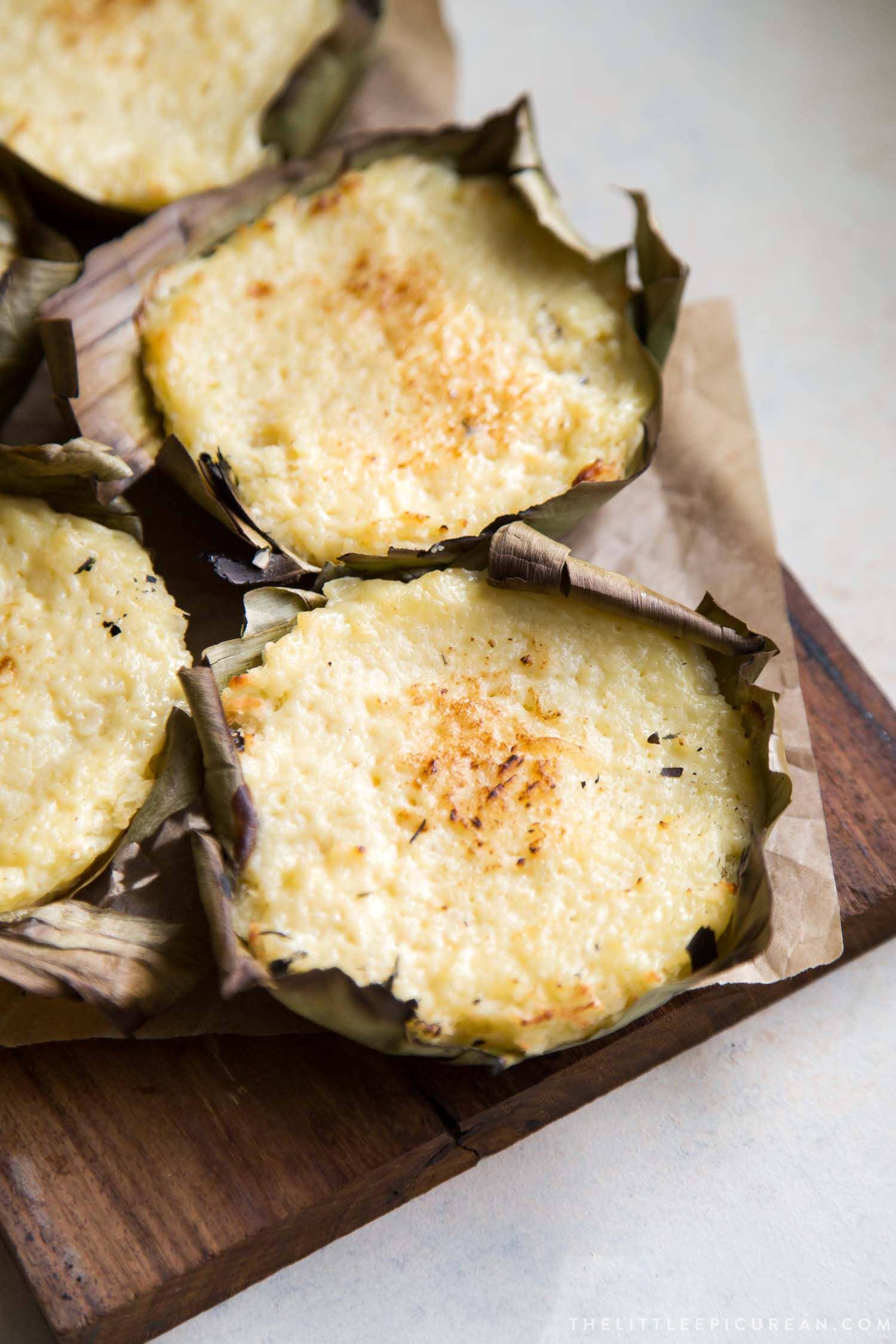
First of all, there are many different variations of cassava cake, cassava bibingka, and bibingka throughout the Philippines.
This is just one of countless versions. This is the recipe I have been taught using ingredients I can easily find in Southern California.
Similar to the regional variations in savory foods like arroz caldo and adobo, sweets like “kakanin” also vary based on location.
While this cassava bibingka may be different from the one you are used to, I suggest you give it a try before you knock it down!
Table of Contents
What is cassava?
Also called yuca or manioc, cassava is a tuber plant similar to sweet potato and taro. It is a drought tolerant starchy vegetable that can grow and flourish with little water. Cassava is native to South America.
Cassava root is popularly used throughout Southeast Asia and Africa. In the United States, you may be more familiar with tapioca pearls (used for tapioca pudding) which is made from gelatinized cassava starch.
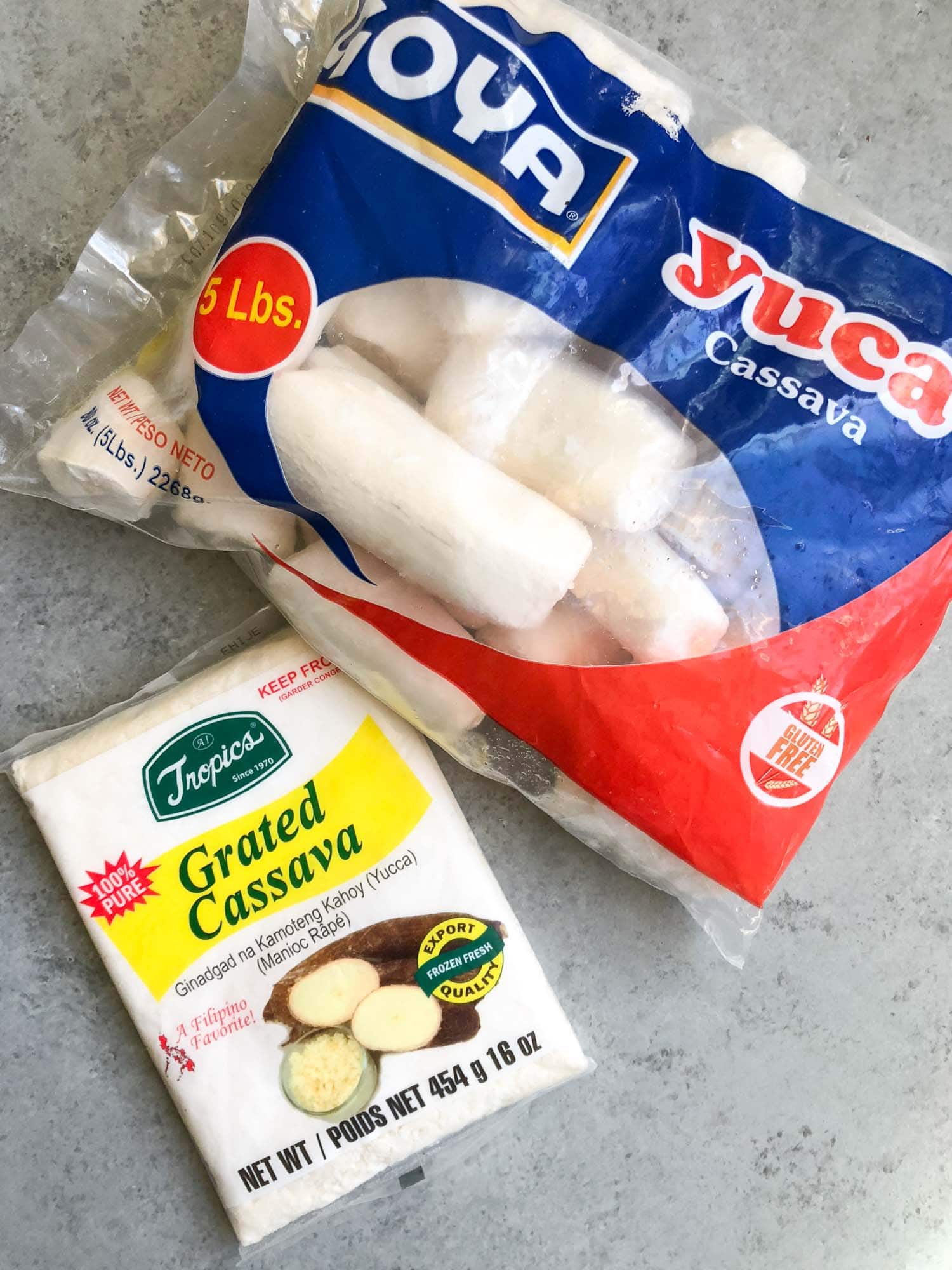
Where to buy cassava?
I had no luck finding fresh cassava. Once I do, I will update this post with photos and additional preparation instructions.
Many supermarkets carry frozen cassava. (My local Ralphs/Kroger has it!) Asian or Latin markets will definitely sell it. Frozen cassava is either sold in large pre-peeled chunks or pre-grated.
Allow the frozen cassava to defrost before using. For the whole cassava chunks, grate by hand using a cheese grater or speed up the work by using a grater attachment in a food processor.
What is bibingka?
Traditionally, bibingka refers to a Filipino baked cake made with rice (usually glutinous rice) and coconut milk.
Over the years, the term bibingka has come to include various other cakes made with cassava or corn.
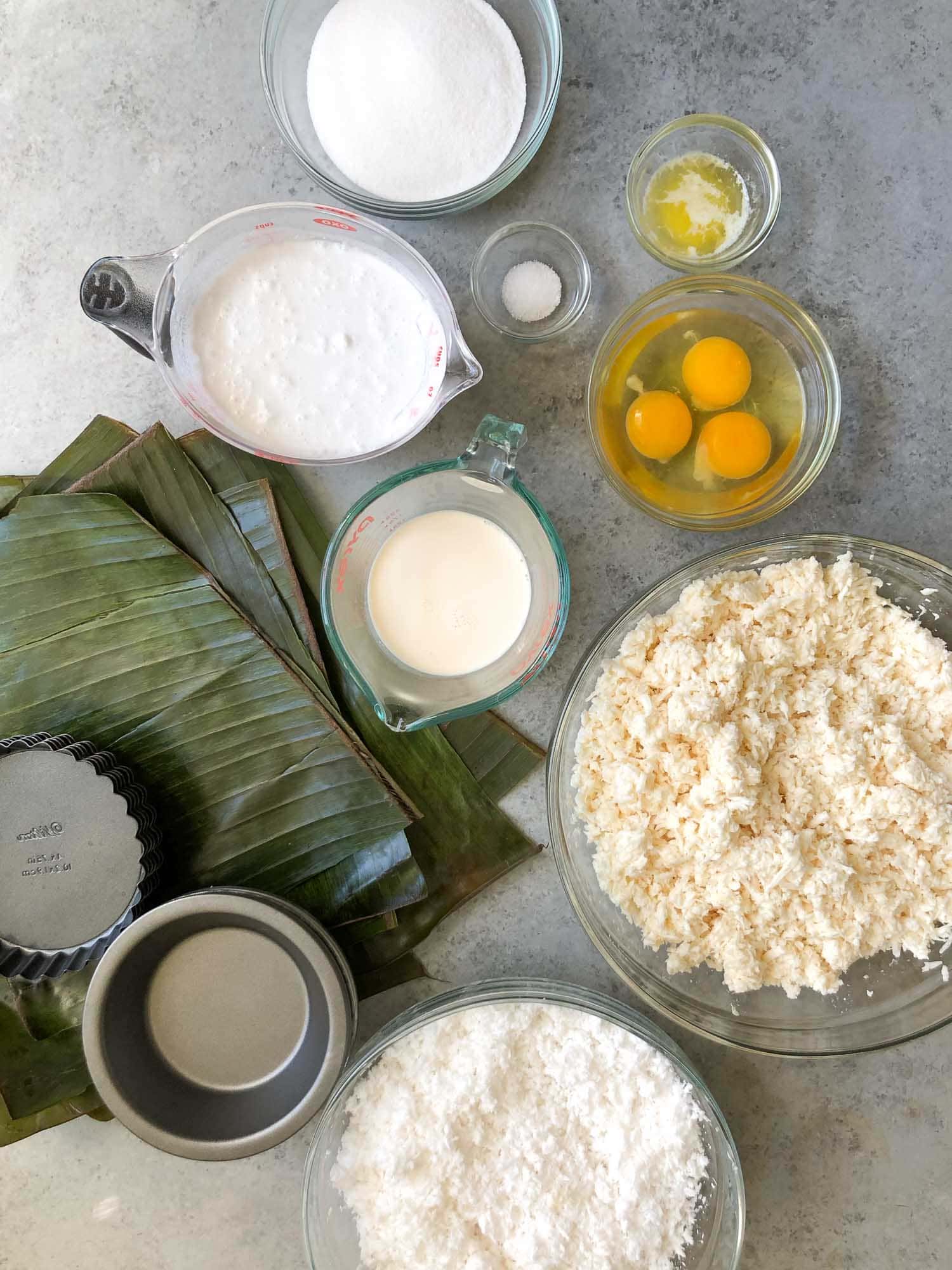
How is cassava bibingka different from cassava cake?
This cassava bibingka is made with a combination of grated cassava root and grated fresh coconut. It is baked in banana leaves similar to more traditional bibingka recipes.
The texture of this cassava bibingka is more cake-like. Whereas, cassava cake is more like a pudding or custard.
Cassava cake is generally made with grated cassava and coconut milk. It it baked in a rectangular shape and sliced into bars.
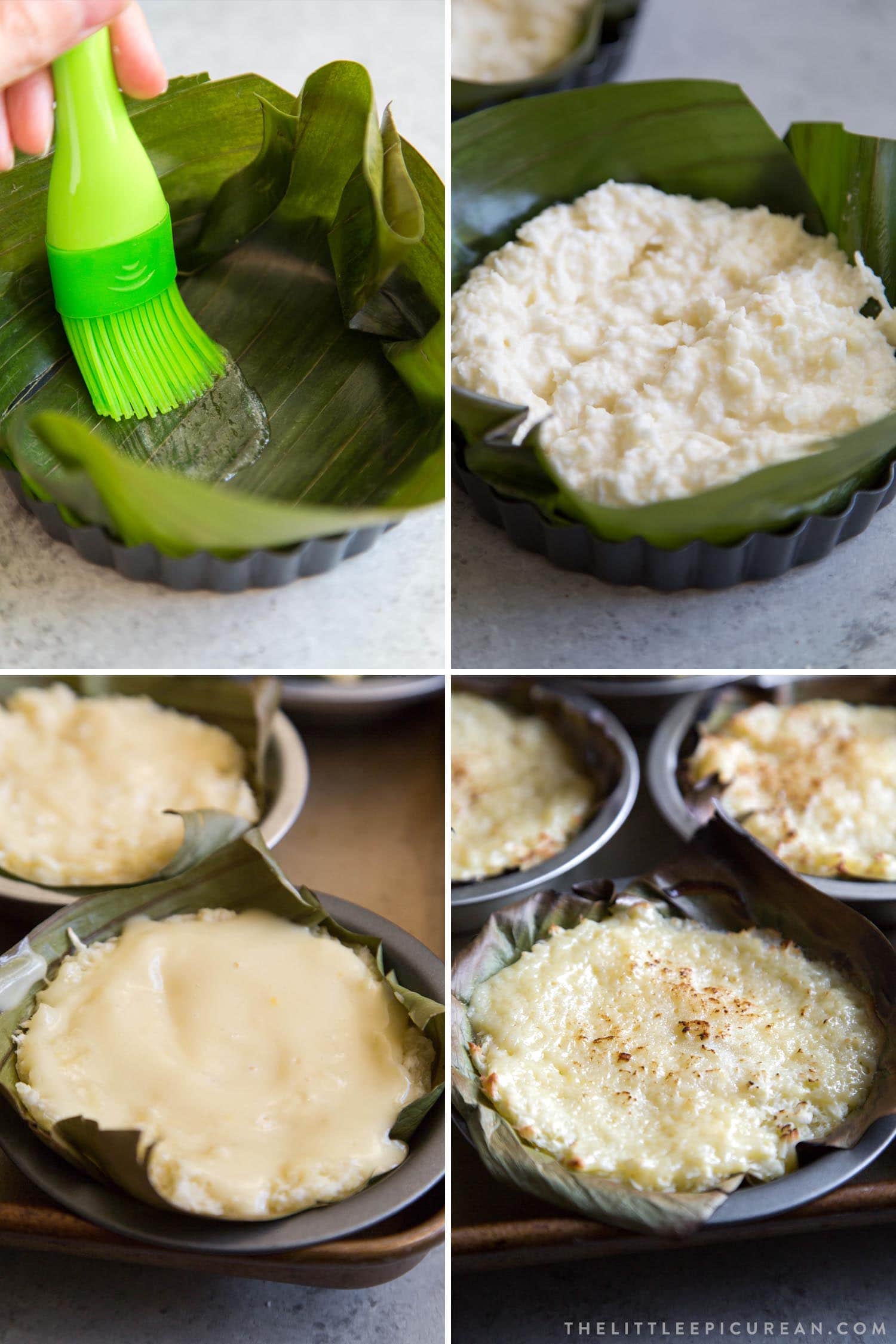
How to assemble cassava bibingka
Line mini pie tins or tart shells with prepared banana leaves. Brush the banana leaves with melted butter.
Fill pie tin with cassava-coconut mixture. Spread into an even layer. Bake until almost set.
Remove from the oven and spread coconut cream mixture over cassava bibingka. Return to oven and finish baking.
Cassava bibingka can be served warm, room temperature, or chilled.
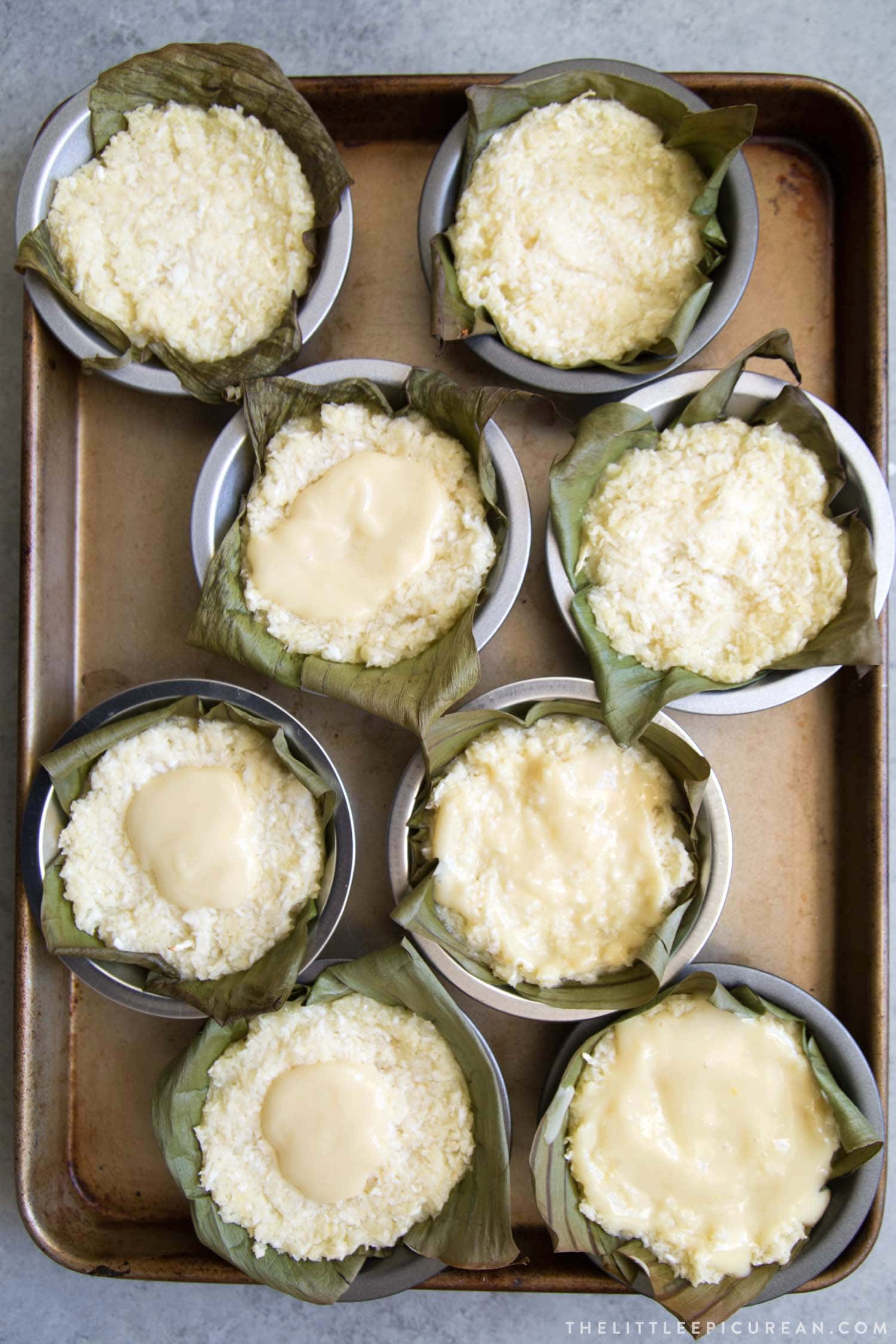
Bibingka Topping Variations
This cassava bibingka is simply topped with sweetened coconut cream. Other topping choices include shredded salty cheese, toasted coconut, or salted duck egg.
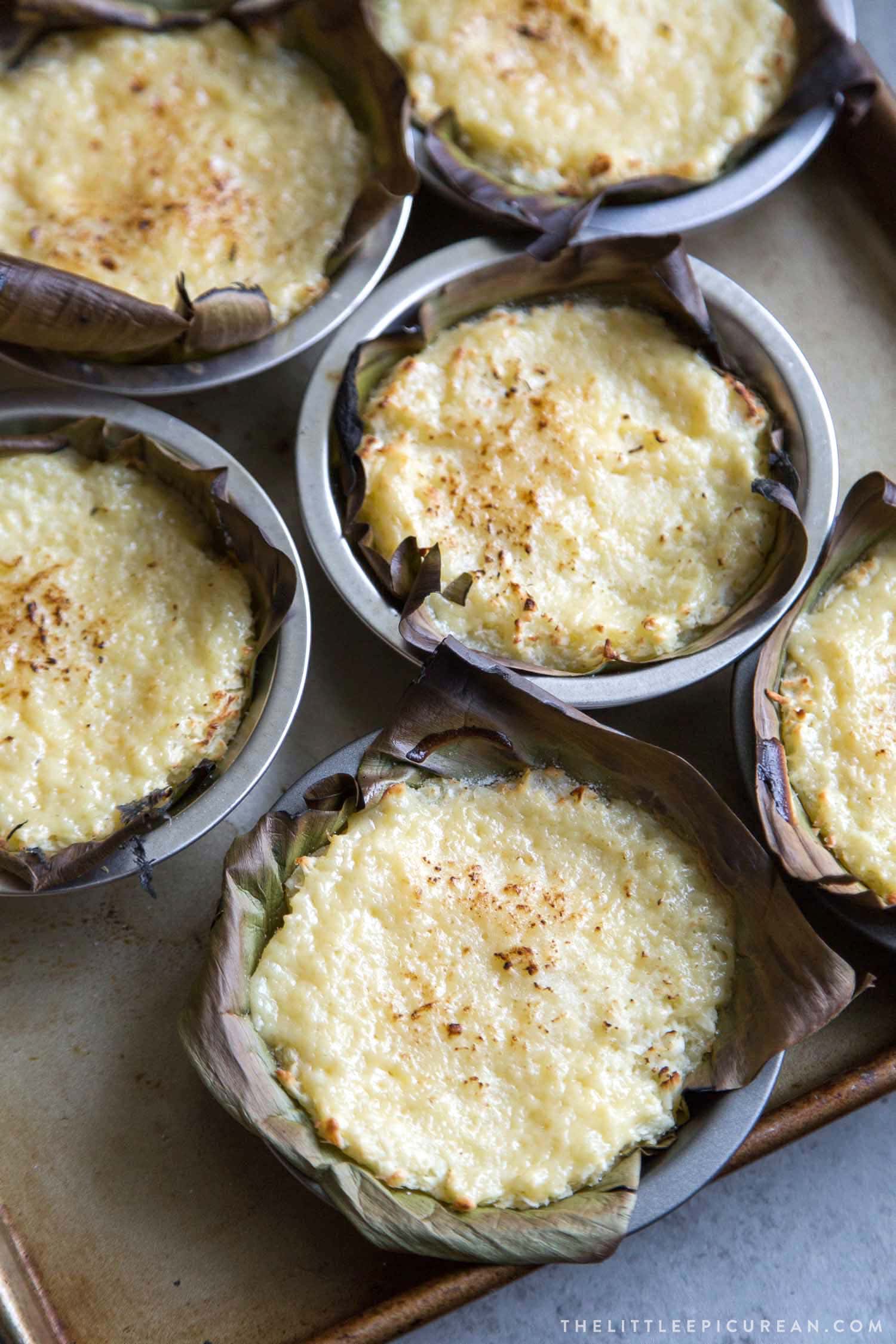
How to use banana leaves?
Banana leaves are generally sold frozen. Thaw the frozen leaves in the fridge overnight, or thaw at room temperature for an hour or so. If in a hurry, the frozen leaves can also be quickly thawed under running water.
Wash the leaves before using! Regardless if the banana leaves have come packaged, they may be dirty. Give the leaves a quick wash to remove any dirt or debris.
Wipe the leaves dry. At this point, the banana leaves will still be rather tough. To make the leaves pliable and easier to work with, you need to heat the leaves.
Pass the banana leaf over an open flame (stove-top) 2-3 times. DO NOT BURN THE LEAVES! Hold the leaves using tongs to prevent burning your fingers.
Once the leaves are flexible, cut them into into the appropriate size to line your mini pie tins or tart shells.
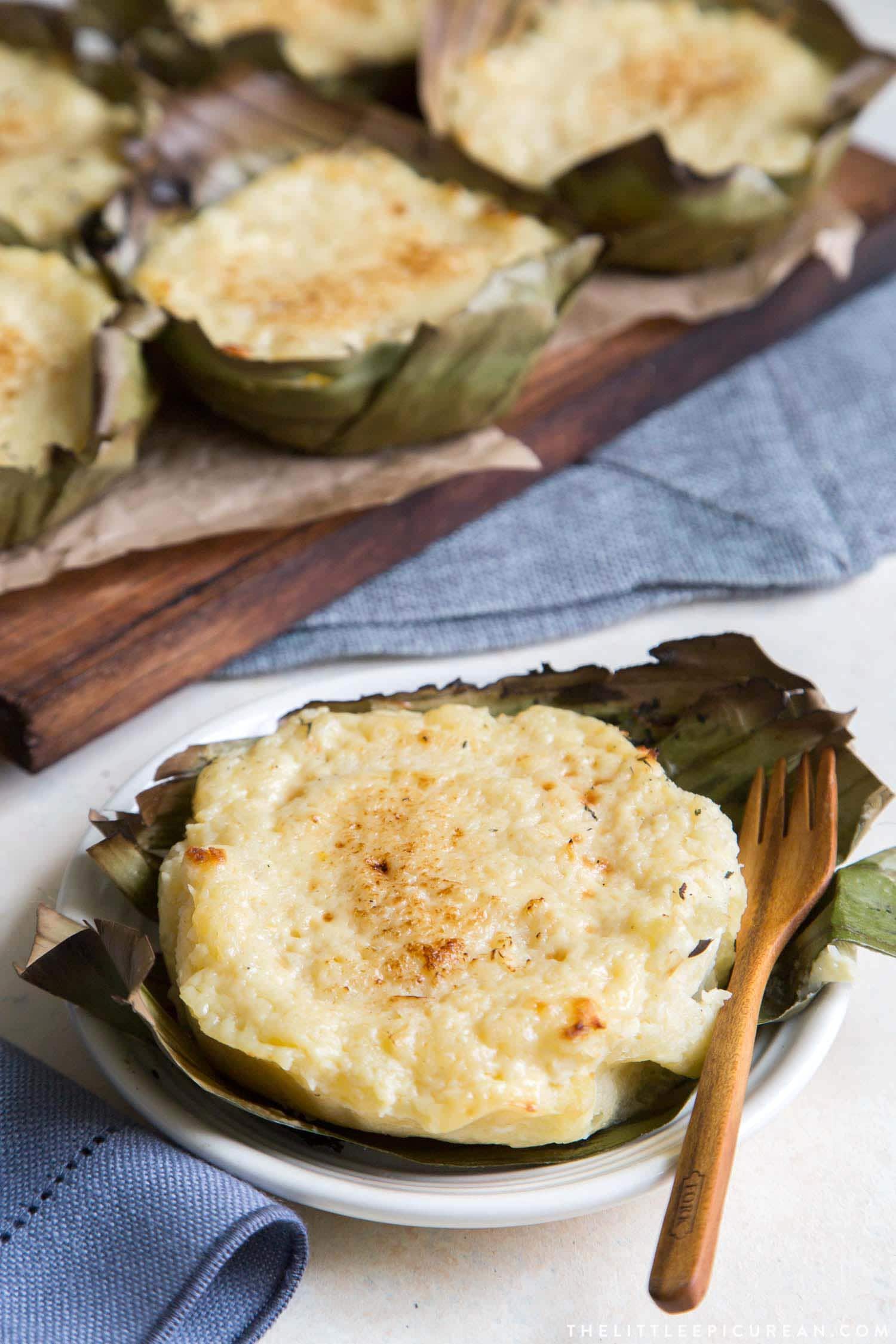
Do not eat the banana leaf. It is simply used to impart a subtle flavor and aroma.
Cassava Bibingka
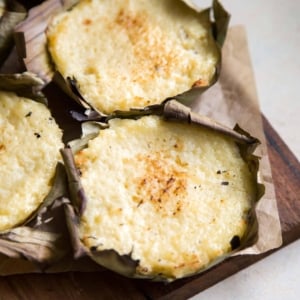
Ingredients
- 3 large eggs
- 1 ¼ cup granulated sugar, (250 g)
- 1- 13.5 oz can coconut milk, (400 ml)
- ¾ cup evaporated milk, (192 g)
- 1 Tablespoon unsalted butter, (14 g) melted
- ½ kg grated fresh coconut
- 1 kg grated cassava root, (about 2.5 pounds/40 oz)
- generous pinch kosher salt, , or fine sea salt
- banana leaves,, as needed
- melted butter,, as needed for brushing
Topping:
- 1- 13.5 oz can coconut cream , (400 ml)
- ½ cup sweetened condensed milk, (156 g)
- ¼ cup granulated sugar, (50 g)
- 2 large egg yolks
- 2 Tablespoon unsalted butter, (28 g)
- generous pinch kosher salt, , or fine sea salt
Instructions
- Preheat oven to 350°F. Prepare banana leaves.
- BANANA LEAVES: Thaw frozen banana leaves. Wash before using. Wipe leaves dry. Pass banana leaf over an open flame (stove-top) 2-3 times to make the leaves more pliable. Hold the leaves using tongs to prevent burning your fingers. DO NOT BURN THE LEAVES.
- Once leaves are flexible, use scissors to cut leaves into appropriate size to line mini pie tins or tart shells. Grease banana leaves with softened butter and set aside.
- CAKE BATTER: In a large bowl, whisk together eggs, sugar, coconut milk, evaporated milk, and melted butter until smooth. Add grated cassava and grated fresh coconut. Season with salt. Fold until mixture is well combined.
- Spoon about a rounded cup of mixture into each prepared mini pie tin (more if using a larger/wider tart shell). Spread mixture into an layer. Bake for 20-22 minutes until cake is almost set.
- TOPPING: While cake is baking, prepare topping. In a small heavy-bottomed sauce pot, whisk together coconut cream, condensed milk, sugar, egg yolks, and butter. Set over medium heat. Stirring continuously, bring mixture to a boil. Reduce to a simmer and continue to stir until mixture has thickened.
- Remove cakes from oven. Spread a thin layer of coconut cream topping over each cake. Remove to oven and cook for another 10-12 minutes until cakes are completely set. If desired, set up broiler for 30 seconds to gently caramelize sugar on topping. BE CAREFUL because banana leaves may flame and fire.
- Cassava bibingka can be served warm, at room temperature, or chilled. Season with additional salt to make the cake taste “sweeter.” Alternatively, baked cakes can be topped with grated salted hard cheese or salted duck eggs.
Notes
- This recipe uses fresh coconut, not dried coconut. Fresh grated coconut is often sold frozen at Asian markets.
- Grated coconut can be omitted. Simply substitute in equal amount grated cassava root.
- If using frozen grated cassava or frozen coconut, thaw overnight in the fridge or at room temperature for an hour. If in a hurry, thaw package over running water.
- Banana leaves help to impart subtle aroma and flavor. Banana leaves are not necessary. If you cannot find any, simply cook cassava bibingka in well greased mini pie tins.
- I used these 5-inch mini pie tins and 5-inch tart shells with removable bottoms.
Nutrition
Nutrition information is automatically calculated, so should only be used as an approximation.
 Like this recipe? Rate & comment below!
Like this recipe? Rate & comment below!